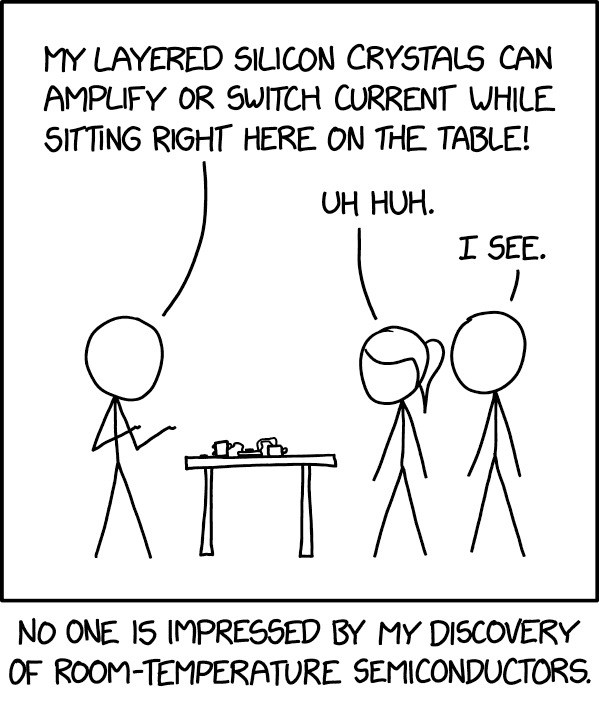stravanasu
- 15 Posts
- 126 Comments
findmnt --real
Cheers! Apparently Ubuntu uses the
relatimesetting.
So what are the
atimesettings in a Linux distribution like Ubuntu?
Thank you! didn’t know about that command.
Edit: explicitly installing 10.1 with
sudo apt install wine-staging=10.1~focal-1 wine-staging-amd64=10.1~focal-1 wine-staging-i386:i386=10.1~focal-1 winehq-staging=10.1~focal-1worked.
Thank you for the help!
But I can’t remove wine-staging, at least not via
apt:$ sudo apt remove wine-staging-i386 Reading package lists... Done Building dependency tree Reading state information... Done You might want to run 'apt --fix-broken install' to correct these. The following packages have unmet dependencies. wine-staging : Depends: wine-staging-i386 (= 10.2~focal-2) Depends: wine-staging-amd64 (= 10.2~focal-2) but 10.2~focal-1 is to be installed E: Unmet dependencies. Try 'apt --fix-broken install' with no packages (or specify a solution).So no go there.
--fix-brokendoesn’t work either:$ sudo apt --fix-broken install Reading package lists... Done Building dependency tree Reading state information... Done Correcting dependencies... Done The following additional packages will be installed: wine-staging-amd64 The following packages will be upgraded: wine-staging-amd64 1 to upgrade, 0 to newly install, 0 to remove and 9 not to upgrade. 3 not fully installed or removed. Need to get 0 B/114 MB of archives. After this operation, 15.4 kB of additional disk space will be used. Do you want to continue? [Y/n] Y Preconfiguring packages ... (Reading database ... 393922 files and directories currently installed.) Preparing to unpack .../wine-staging-amd64_10.2~focal-2_amd64.deb ... Unpacking wine-staging-amd64 (10.2~focal-2) over (10.2~focal-1) ... dpkg: error processing archive /var/cache/apt/archives/wine-staging-amd64_10.2~focal-2_amd64.deb (--unpack): trying to overwrite '/opt/wine-staging/bin/wine', which is also in package wine-staging-i386:i386 10.2~focal-2 dpkg-deb: error: paste subprocess was killed by signal (Broken pipe) Errors were encountered while processing: /var/cache/apt/archives/wine-staging-amd64_10.2~focal-2_amd64.deb E: Sub-process /usr/bin/dpkg returned an error code (1)Any idea on how to remove Wine manually, bypassing
apt?
The problem is that the whole
aptsystem seems to be broken. It doesn’t let me install other packages, and I can’t even uninstall wine. So I wonder if any fixes from wine will work. It looks like this needs the user’s manual intervention.$ sudo apt upgrade Reading package lists... Done Building dependency tree Reading state information... Done You might want to run 'apt --fix-broken install' to correct these. The following packages have unmet dependencies. wine-staging : Depends: wine-staging-amd64 (= 10.2~focal-2) but 10.2~focal-1 is installed E: Unmet dependencies. Try 'apt --fix-broken install' with no packages (or specify a solution).$ sudo apt remove wine-staging-amd64 Reading package lists... Done Building dependency tree Reading state information... Done You might want to run 'apt --fix-broken install' to correct these. The following packages have unmet dependencies. wine-staging : Depends: wine-staging-amd64 (= 10.2~focal-2) but it is not going to be installed E: Unmet dependencies. Try 'apt --fix-broken install' with no packages (or specify a solution).but
sudo apt --fix-broken installdoes not solve anything…

 3·3 months ago
3·3 months agoUnited States of chinA

 1·3 months ago
1·3 months agoRestored! Maybe worth a post update?

 361·5 months ago
361·5 months ago“Ethical and legal objections”. The point in this case is that what’s legal is unethical, and what’s ethical is illegal. Analogous to other situations through history and countries, for example in the USA when it was illegal for black people to sit in certain parts of a bus, or in Germany when marriage with Jewish people was illegal.
As human beings, it’s always important to make the ethical choice.

 1·1 year ago
1·1 year agoThank you for the explanation! – it puts that sentence into perspective. I think he put it in a somewhat unfortunate and easily misunderstood way.

 191·1 year ago
191·1 year ago“Bayesian analysis”? What the heck has this got to do with Bayesian analysis? Does this guy have an intelligence, artificial or otherwise?

 58·2 years ago
58·2 years ago

 1·2 years ago
1·2 years agoIt’s reached 333 protesters! that’s 1/3 of the way to 1000, it’d be cool if it kept on increasing :)

 181·2 years ago
181·2 years agoNothing dense in this, I don’t quite know what to write either. In my opinion what you wrote in your comment is just perfect, you’re a citizen simply expressing an honest concern, without lying – not all people are tech-savvy. It also makes it clear that it’s a letter from a real person.
But that’s only my point of view, and maybe I haven’t thought enough steps ahead. Let’s see what other people suggest and why.

 70·2 years ago
70·2 years agoFrom this github comment:
If you oppose this, don’t just comment and complain, contact your antitrust authority today:
- UK:

 36·2 years ago
36·2 years agoThis is actually already implemented, see here.

 12·2 years ago
12·2 years ago(also @ridethisbike@lemmy.world)
Maybe it is pointless, maybe it is a bad idea. Maybe not. It’s difficult to predict what this kind of small-scale actions will have on the big picture and future development. No matter what you choose or not choose to do, it’s always a gamble. My way of thinking is that it’s good if people say, through this kind of gestures, “I’m vigilant, I won’t allow just anything to be done to me. There’s a line that shouldn’t be crossed”.
Of course you’re right about supporting and choosing alternative browsers, and similar initiatives. There are many initiatives on that front as well. I’ve never used Chrome, to be honest; always Firefox. But now I’ve even uninstalled the Chromium that came pre-installed on my (Ubuntu) machines. Besides that I ditched gmail years ago, and I’ve also decided to flatly refuse to use Google tools (Google docs and whatnot) with collaborators, as a matter of principle. If that means I’m cut out of projects, so be it.
Regarding WEI, I see your point, but I see dangers in “acknowledging” too much. If you read the “explainer” by the Google engineers, or in general their replies to comments and criticisms, you see that they constantly use deceiving, manipulative, and evasive language. As an example, the “explainer” says a lot “the user needs this”, “the user desires that”, but when you unfold the real meaning of the sentences it’s clear it isn’t something done for the user.
This creates a need for human users to prove to websites that they’re human
Note the “need for human users”, but the sentence actually means “websites need that users prove…”. This is just an example. The whole explainer is written in such a deceiving manner.
The replies to criticisms are all evasive. They don’t reply the actual questions or issues, they start off a tangent and spout a lot of blah blah with “benefit”, “user”, and other soothing words – but the actual question or issue never gets addressed. (Well, if this isn’t done on purpose, then it means they are mentally impaired, with sub-normal comprehension skills).
I fuc*ing hate this kind of deceiving, politician talk – which is a red flag that they’re up to no good – and I know from personal experience that as soon as you “acknowledge” something, they’ll drag your into their circular, empty blabber while they do what they please.
More generally, I think we should do something against the current ad-based society and economy. So NO to WEI for me.

 7·2 years ago
7·2 years agoAgree (you made me think of the famous face on Mars). I mean that more as a joke. Also there’s no clear threshold or divide on one side of which we can speak of “human intelligence”. There’s a whole range from impairing disabilities to Einstein and Euler – if it really makes sense to use a linear 1D scale, which very probably doesn’t.

 13·2 years ago
13·2 years agoHere?: https://ungoogled-software.github.io/about/
Looks like a good project, I didn’t know about its existence.







Does it really? sad. I was reading the “invite” process and can’t say I fully understand it.
Papers can always be uploaded to https://libgen.is/scimag/librarian/ Many thanks to all the anonymous users who do.